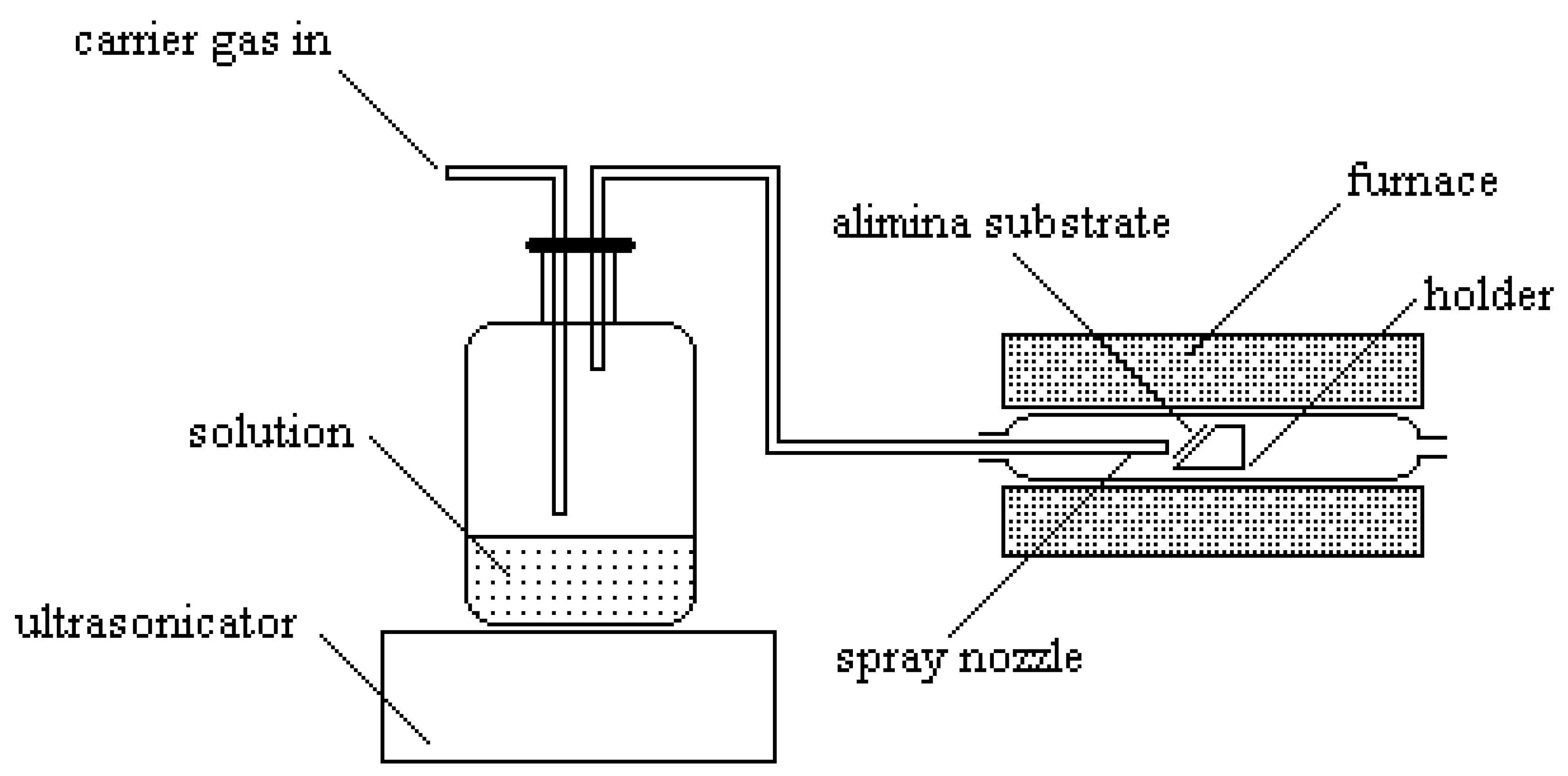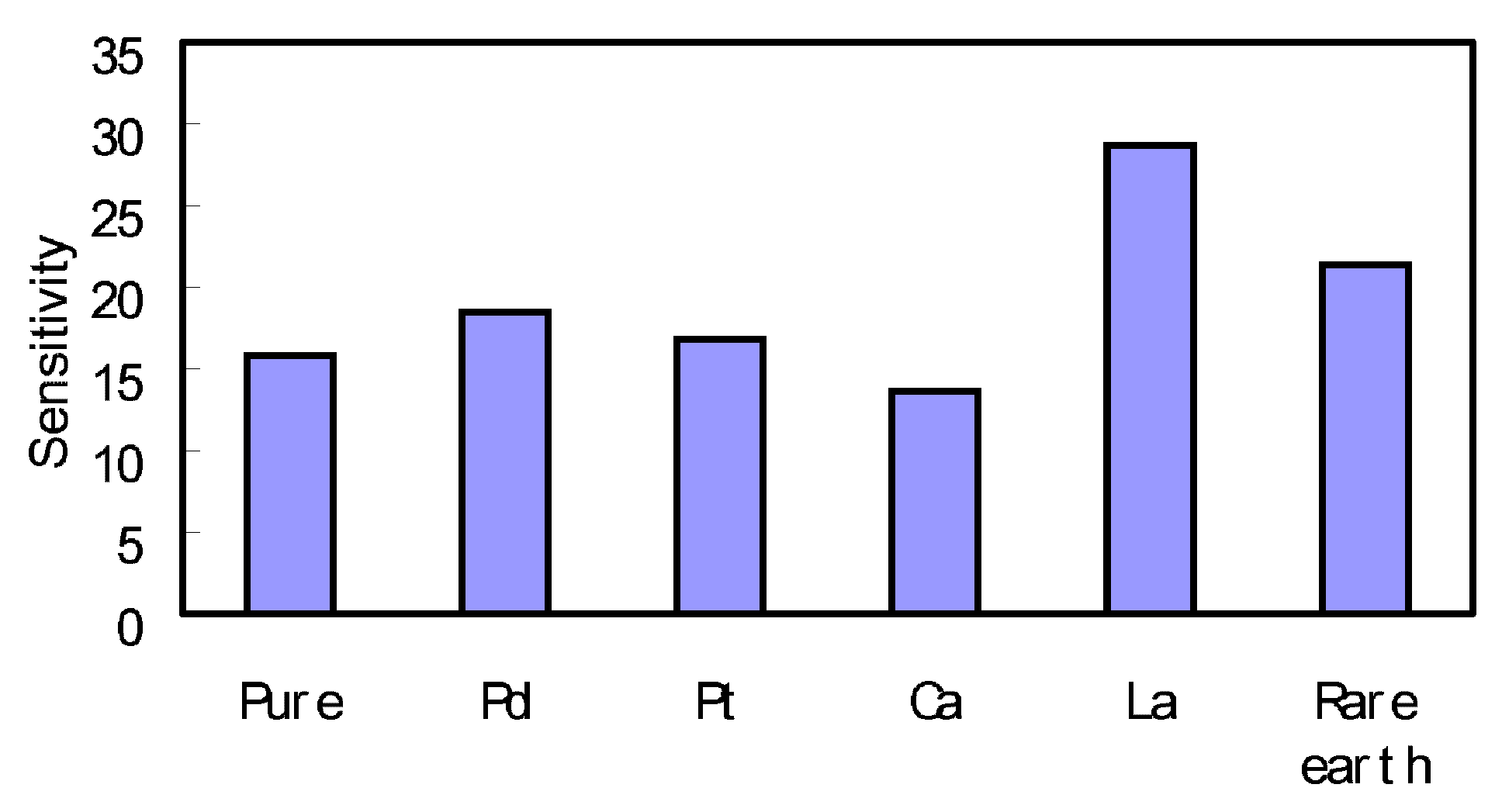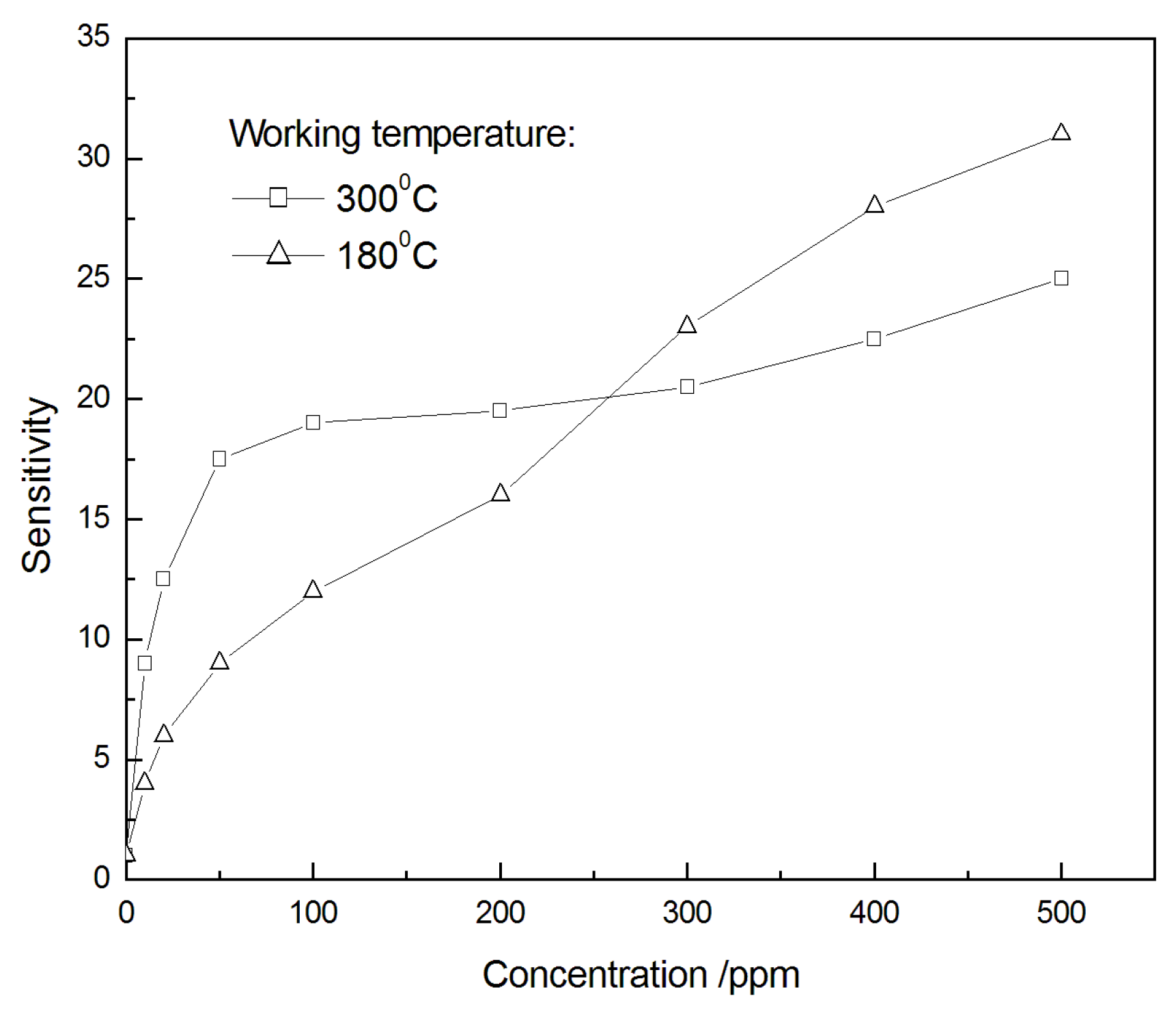The NO2 sensing ITO thin films prepared by ultrasonic spray pyrolysis
Abstract
:Introduction
Experimental

Results and discussion
Structure analysis

Gas sensing properties



Conclusion
Acknowledgments
References
- Karim, A.A.; Deshpandey, C.; Doerr, H.J.; Bunshah, R.F. Thin Solid Films 1989, 172, 11.
- Chopra, K.L.; Kaur, I. Thin Film Device and Applications; Plenum: New York, 1983. [Google Scholar]
- Kim, H.; Piqu, A.; Horwitz, J.S.; Mattoussi, H.; Murata, H.; Kafafi, Z.H.; Chrisey, D.B. Appl. Phys. Lett. 1999, 74, 3444.
- Tang, C.W.; Vanslyke, S.A. Appl. Phys. Lett. 1087, 51, 913.
- Sako, T.; Ohmi, A.; yumoto, H.; Nishiyama, K. Surface and Coatings Technol. 2001, 142–144, 781.
- Sberveglieri, G.; Benussi, P.; Coccoli, G.; Gropplli, S.; Nelli, P. Thin Solid Films 1990, 186, 349.
- Patel, N.G.; Makhija, K.K.; Panchal, C.J.; Dave, D.-B.; Vaishnav, V.S. Sensors and Actuators 1995, B23, 49.
- Yumoto, H.; Inoue, T.; Li, S.J.; Sako, T.; Nishiyama, K. Thin Solid Films 1999, 345, 38.
- Rykara, L.A.; Salum, V.S.; Serbinov, I.A. Thin Solid Films 1982, 92, 327.
- V.Korobov, M. Leibovitch, Yoram Shapira. Appl. Phys. Lett 1994, 65(18), 2290. [Google Scholar]
- Ma, Jin; Li, Shu-Ying; Zhao, Jun-Qing; Ma, Hong-Lei. Thin Solid Films 1997, 307, 200.
- Zheng, J. P.; Kwok, H. S. Appl. Phys. Lett. 1993, 63(1), 1.
- Ray, Swati; Banerjee, Ratnabali; Basu, N.; Batabyal, A.K.; Barua, A.K. J.Appl. Phys. 1983, 54(6), 3497.
- Kwok, H.S.; Sun, X.W.; Kim, D.H. Thin Solid Films 1998, 335, 299.
- Sample Availability: Available from the authors.
© 2003 by MDPI (http://www.mdpi.org). Reproduction is permitted for noncommercial purposes.
Share and Cite
Jiao, Z.; Wu, M.; Qin, Z.; Lu, M.; Gu, J. The NO2 sensing ITO thin films prepared by ultrasonic spray pyrolysis. Sensors 2003, 3, 285-289. https://doi.org/10.3390/s30800285
Jiao Z, Wu M, Qin Z, Lu M, Gu J. The NO2 sensing ITO thin films prepared by ultrasonic spray pyrolysis. Sensors. 2003; 3(8):285-289. https://doi.org/10.3390/s30800285
Chicago/Turabian StyleJiao, Zheng, Minghong Wu, Zheng Qin, Minghua Lu, and Jianzhong Gu. 2003. "The NO2 sensing ITO thin films prepared by ultrasonic spray pyrolysis" Sensors 3, no. 8: 285-289. https://doi.org/10.3390/s30800285



